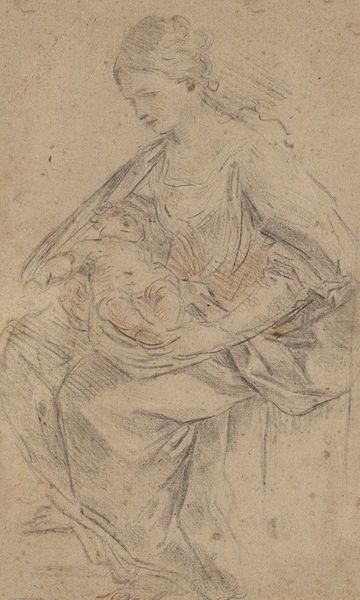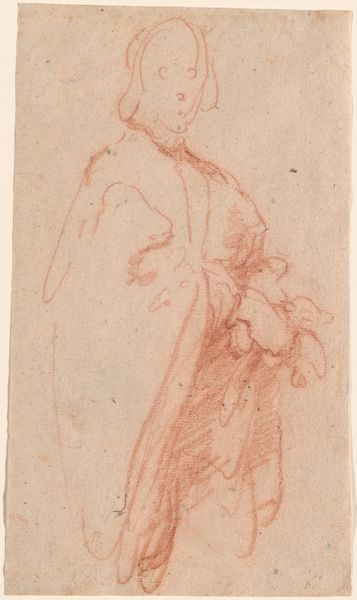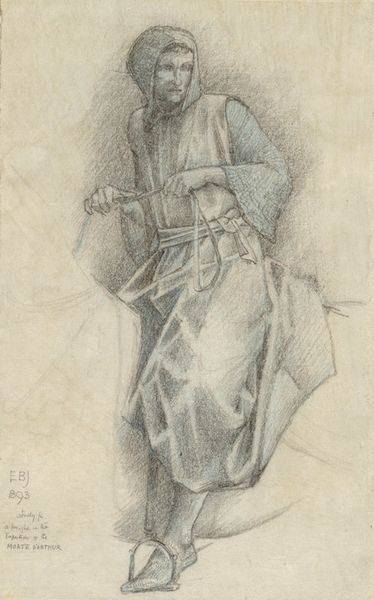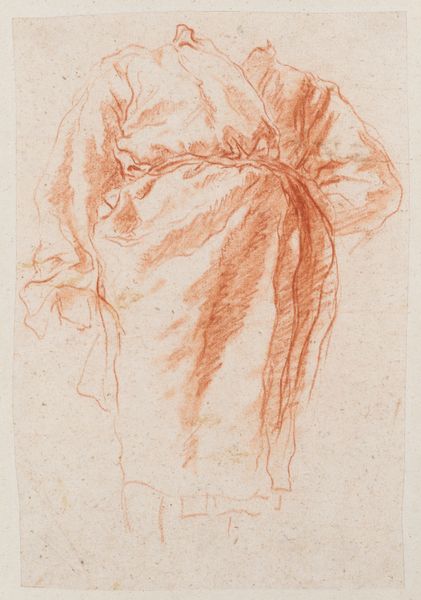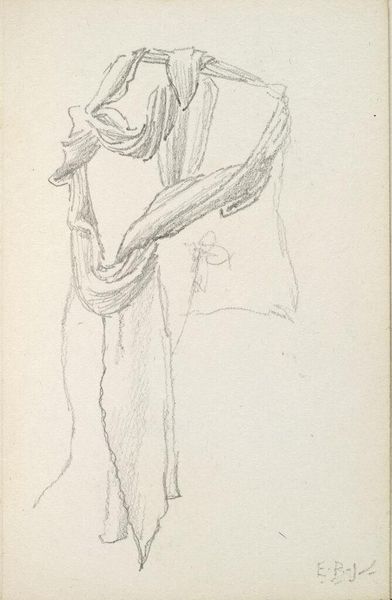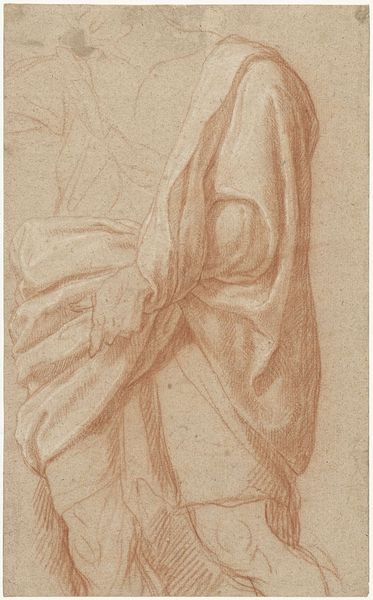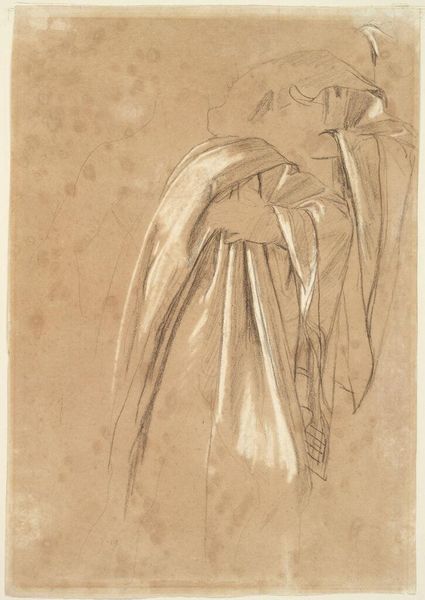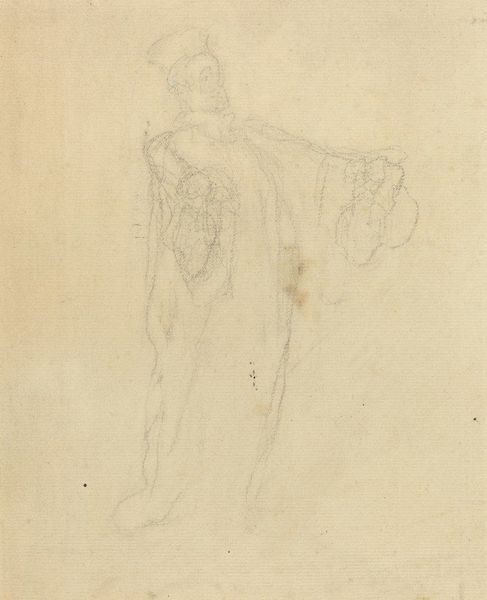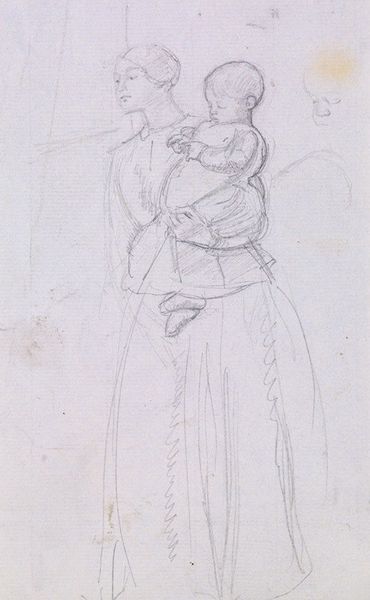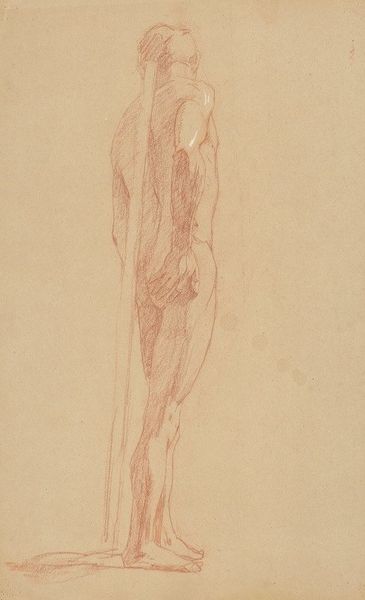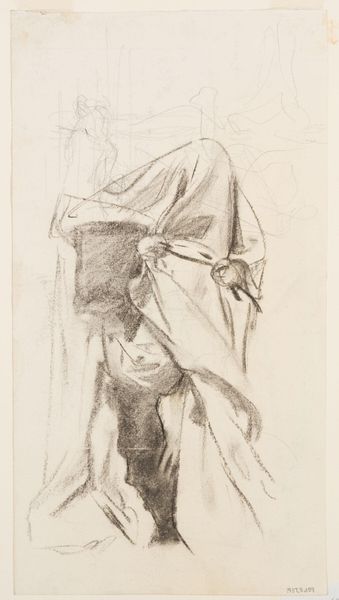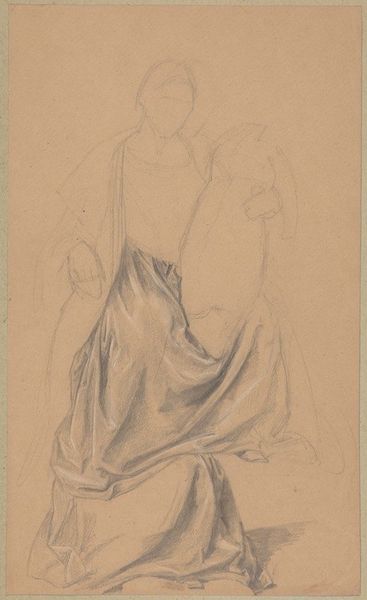
drawing, pencil
#
portrait
#
pencil drawn
#
drawing
#
pencil sketch
#
charcoal drawing
#
figuration
#
pencil drawing
#
pencil
#
portrait drawing
#
pre-raphaelites
#
academic-art
Copyright: Public Domain: Artvee
Editor: Here we have "Classical Figure," a pencil drawing by Edward Burne-Jones. There's something very delicate about the lines, almost ethereal, which makes it captivating. I am interested in what you see in it, with your background. Curator: Well, seeing as Burne-Jones was a prominent figure in the Pre-Raphaelite movement, it’s key to think about this drawing within the context of their broader artistic project: a rejection of what they saw as the stale conventions perpetuated by the Royal Academy. This "classical" figure is almost certainly derived from antique sculpture. The drawing exemplifies the Victorian era's fascination with ancient Greece and Rome, often romanticizing and idealizing them through art and literature. What kind of status did this image have? Editor: I suppose I hadn't really considered that. Is the subject itself particularly significant in that kind of artistic context? Curator: Yes, to a certain degree. The choice to depict a classical figure highlights the Pre-Raphaelites' interest in themes from mythology and history, moving away from purely academic exercises to something more emotionally resonant, don’t you agree? The artist makes a very direct visual reference to the classic figure that then filters through the more contemporary Victorian era: what tensions do you find in that contrast? Editor: Now that you point it out, I think the artist is exploring historical themes in a contemporary aesthetic medium! Did Pre-Raphaelites try to democratize art? Curator: That's interesting! In a sense, yes. They often challenged established artistic hierarchies by favoring sincerity and emotional honesty over rigid technical skill, attempting to bring art closer to everyday experience, at least conceptually. Editor: So this wasn’t just about pretty pictures, it was also an exercise in accessing historical material culture. I see now how crucial it is to think about where art stands within society. Curator: Precisely. And it also shows how historical movements constantly negotiate with those from the past, reimagining them through art and in culture generally.
Comments
No comments
Be the first to comment and join the conversation on the ultimate creative platform.
